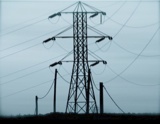
In preparation for this meeting with Jean-Louis Borloo, the President of the General Council, Christian Estrosi organized a “departmental energy round table” on Monday, November 17, 2008. This meeting, which brought together 200 participants including economic actors, environmental associations, and local personalities, helped reach a broad consensus on the needs of the Alpes-Maritimes, a “true electrical peninsula,” in terms of energy and development opportunities.
### The departmental energy round table defined three main axes of evolution:
1 — Strengthening the existing network while respecting the environment, notably by burying a 225,000-volt line that “should not pass through the Verdon.” The old project route through the Verdon is now permanently abandoned. RTE will need to work towards this new possibility and implement urgent actions by 2010 and short-term actions by 2015.
2 — The option of strengthening with a 225,000-volt line will require the Alpes-Maritimes department to supplement its local production needs through the development of renewable energies across the territory, with concrete actions in the near future: photovoltaic farms, marine and geothermal energy… with the support of the Capenergies competitiveness cluster specifically in terms of storage. An innovative approach to seawater heat pumps, with the nearby reference of the Grimaldi Forum in Monaco, particularly caught attention due to the department’s maritime façade.
Mr. Christian Estrosi wished for an open debate where all opinions are expressed and enrich the solutions provided. He expressed his clear ambition for the Alpes-Maritimes: “In March 2007, the European Council of Heads of State and Government adopted several goals for 2020, including a 20% share of renewable energies in energy consumption, the commitment to reduce greenhouse gas emissions by at least 20%, and an increase in energy efficiency to save 20% in energy consumption. By February 2018, around the time of the Winter Olympic Games, if Nice has the pleasure of being selected, which is 2 years before the intended date, the Alpes-Maritimes and Nice should reach these goals, if not achieve 30% instead of 20%.” He also reiterated his wish to move quickly by using all avenues of improvement and highlighted the major projects that will be part of the Territorial Energy Climate Plan.
3 — Managing demand through actions and measures in terms of energy efficiency. We need to consume less while living better. This specifically raises the question of changing residents’ behaviors but also a shift in the construction of energy-efficient buildings, whether public or private.
### Towards eco-urbanism
In terms of urban planning, the eco-city of the Var plain, a place of innovation and home to major facilities such as the Grand Stade which will be energy positive; the Nice-Méridia eco-district, the first zero CO2 emission district in France; the urban redevelopment of the Moulins area with the first social housing labeled Effinergie.
Eco-conditionality will be a new criterion in awarding public subsidies or aid to the private sector.
The tertiary buildings to be constructed by the Alpes-Maritimes General Council, the Nice-Côte d’Azur Urban Community, and the City of Nice, starting from December 31, 2009, must be energy positive. As for public and social housing, by the same date, they must comply with the consumption standard of 50 kWh/m²/year with the possible Effinergie labeling. In the private sector, the minimum standard to apply, at the same date, will be 50 kWh/m²/year.
Existing buildings must, in the long run, reduce their consumption to 80 kWh/m²/year. All Nice residents can already, through the thermal imaging study conducted by the Urban Community, know the level of energy loss from their homes.
In any case, all these solutions are expected to materialize by 2015, and in the meantime, the department may experience the blackout it faced last November 3.